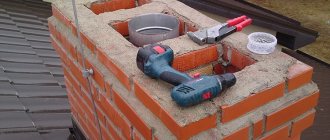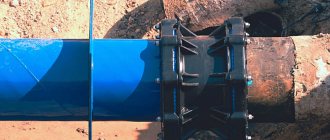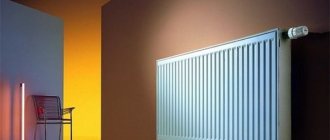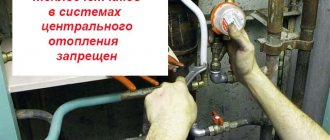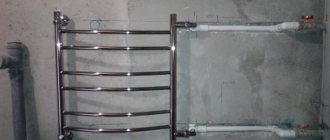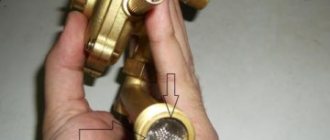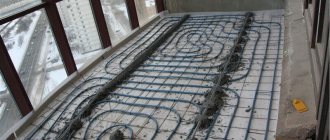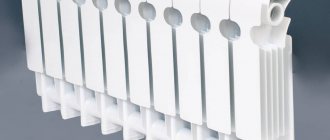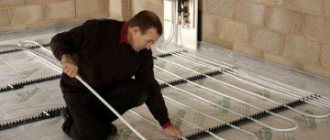Any building material has its own service life, at the end of which it is necessary to replace damaged products. Pipes are no exception. Modern polypropylene pipes are so easy to install that they allow you to replace the entire heating or water supply system without much effort. To determine how to connect polypropylene pipes, just read the article.
A couple of main advantages of such pipes:
- Strength. They are able to withstand pressure surges in the system and high temperatures without transforming their features.
- Durability.
- Corrosion resistance.
- Ease of installation. To install pipes, it is enough to heat them with a special device and connect them using fittings. The connection of a polypropylene pipe with an iron pipe is also carried out using fittings.
Tools
Ease of installation is the first and main advantage of polypropylene pipes; indeed, additional materials and tools are required.
- polypropylene pipes,
- pencil,
- clips for fixing pipes,
- roulette,
- couplings,
- Merilon insulation,
- corners. We will need two types of products: 45 and 90 degrees,
- MRV-eared. It is used to mount the mixer,
- МРВ and МРН outputs with iron thread,
- soldering iron,
- scissors for plastic products.
Necessary components and tools
According to existing standards, to install a water meter on a pipe, you will need components that must be purchased in advance:
- Water filter - can have a different volume, diameter and material of manufacture, the main condition is the presence of a metal mesh to retain small particles. After installation, depending on the water quality, it requires regular inspection and cleaning.
- Shut-off valve - the most convenient for use, is considered to be equipped with ball fittings and made of brass. Plastic pipelines may be equipped with a polypropylene tap. You should not save money; you should only buy a high-quality product that can help out and reliably shut off the water from the supply pipe in the event of an emergency.
- Non-return valve - in the event of a lack of water, it will prevent reverse rotation of the meter readings due to low pressure in the pipe.
- The water meter has a working seal from the manufacturer.
Meter Installation Tool
Lay out the components and the meter in the order of installation, take measurements and make sure that there are no obstacles for installation work. Check the diameter of the pipe to install water meters and purchase the necessary adapters.
Installation
We will consider below how to correctly install a system using polypropylene pipes so that the result is durable. If you still have doubts about your skills, or you do not dare to independently replace products, then forget about it forever. The fact is that, in addition, incorrect soldering of such pipes can be corrected by connecting couplings.
Advice! When choosing polypropylene products, focus on the diameter of old pipes, which will help significantly simplify the installation of the entire structure.
Diffusion welding
Polypropylene products can be joined using several methods, but the most popular is diffusion welding. For reliable fastening of products, fittings are used here: couplings, angles and adapters.
Polypropylene pipes in a cold water supply system are guaranteed to last up to 50 years. They can last for approximately a quarter of a century when installing a warm water supply. Remember that the duration of operation of these products depends on the pressure and temperature of the water in the structure.
The polypropylene pipeline has a huge safety margin, allowing it to withstand all transformations in the system. Thus, high pressure and low temperatures will not affect the operating life of the products. Low pressure and high temperature will have the same effect on polypropylene pipes. But high pressure and temperature indicators, recorded in the system at one moment, will reduce the operating life of the products by 5–7 years. In home pipelines there are no excessive loads that can damage the pipes, so there is no need to worry about this.
Advice! Polypropylene pipes, for which permanent connections are used, cannot be disassembled in the future.
Purchase and preliminary preparation
The feasibility of purchasing and installing a water consumption meter depends on the number of officially registered people in the apartment. Payment is calculated based on the norms of water consumption per person per month approved by the regional authorities, which are the same for both infants and adults.
The legislation of the Russian Federation allows for self-installation of a metering device, subject to the following rules and requirements:
- The water in the riser pipe is shut off by an employee of the management company upon prior application.
- The device must be of an established brand and purchased from an authorized dealer with the appropriate license.
- The meter must have a technical passport (issued by the seller) and a factory seal.
Meter installation
In the event of a pipe break or other emergency related to the installation of a water meter, responsibility and compensation for damage (if installed independently) rests with the homeowner. In old residential buildings, it is recommended to simultaneously replace pipes with the installation of water meters.
The possible diameter of polypropylene pipes used for installing water supply is:
- 25 mm;
- 32 mm;
- 40 mm;
- 50 mm.
Plastic pipe for water supply
For these diameters, meters must be equipped with appropriate couplings and adapters.
After purchase, before installation, the meter, along with the technical passport, must be submitted to the housing office, or to the company involved in registration of household water meters.
Categories of polypropylene pipes
All polypropylene pipes are divided into:
- PN 25. The pipe can withstand 2.5 MPa. Used in heating systems and warm water supply systems.
- PN 20. A universal pipe capable of withstanding 2 MPa. It can be used for cold and warm water supply, provided that the system temperature is not more than 80? C. Polypropylene pipe in this category belongs to products of great strength, since its internal part is reinforced with foil.
- PN 16. Pipe for low pressure heating systems and cold water supply.
- PN 10. Thin-walled pipe that can withstand a pressure of 1 MPa. It is widely used in the construction of heated floors (but at a temperature not exceeding 45? C) and cold water supply (up to +20? C).
A video with good examples of the use of pipes of a certain category will help you make this difficult choice:
Installation on a plastic pipe
To install a water meter on plastic pipes, you will need a branch piece of the same diameter.
Self-replacement is carried out in the following order:
- The water in the riser is shut off.
- At the location where the meter is installed, the necessary part of the plastic pipe is cut off.
- A threaded fitting of the required diameter is soldered to the incoming end (polypropylene pipes come in 25 mm, 40 mm and 50 mm) along with a screwed-on water purification filter.
- An adapter is screwed onto the other end of the plastic pipe to match the thread diameter of the meter.
- Silicone gaskets and the meter itself are installed in the direction of the water pressure movement arrow marked on it.
On plastic pipes, the meter is installed behind the water shut-off valve.
Types of fittings
It is possible to connect two pipes made of different materials (iron and polypropylene) with special fittings. They also provide assistance in connecting plumbing equipment to steel fittings. Inserts on fittings are necessary for reliable fastening of products and they can be brass or chrome-plated. How to use them correctly and where it is better, we will not touch on at the moment, but will consider only their varieties - these are:
- cross,
- combined tees,
- couplings,
- Angle ball valves and straight,
- plug,
- 45 and 90 degree angles,
- elbow (triple or for connecting uniform pipes),
- walk-through water socket,
- transition. It has external thread or plastic type DG,
- welded seat,
- combination couplings,
- combination elbows for pipes,
- combination angles for devices.
Polypropylene taps
When installing polypropylene pipes, two types of taps can be used: polypropylene and metal. If the entire water supply is made of polypropylene, then it is more advisable to use polypropylene taps, it is both cheaper and more convenient.
Fig. 12.
The range of fittings for polypropylene includes taps made of polypropylene. They are welded onto the pipe and do not require additional parts. To switch to a standard inch thread, there are special adapters that are also welded onto a polypropylene pipe.
If it is necessary to install a valve in the transition between different types of pipes, for example, metal and polypropylene, or on a riser, then it is advisable to use a metal valve and use a detachable combined fitting.
Fig. 13.
To connect polypropylene pipes to steel pipes, a collapsible fitting is used. It allows you to connect pipes to a brass ball valve without additional adapters.
It should also be noted that if we are talking about installing polypropylene pipes in a country house, then it is more advisable to use either polypropylene taps or traditional brass taps, but not ball taps. Quite often there are cases when water gets under the ball of a metal ball valve and when it freezes, the valve ruptures. A polypropylene ball valve does not suffer under similar conditions, because polypropylene is a more flexible material.
Movement of pipe connection work
Fastening products made of polypropylene is a simple process, but it requires care and precision. In order to do everything correctly, you need to read the instructions that come with the soldering iron. It is better to carry out all pipe soldering work in stages.
First, let's make a diagram! A new plumbing system begins with marking taps, filters, turns and other parts. After completing the detailed diagram, it is possible to begin partial assembly of the pipeline. Some parts can be connected without soldering using glue, but others require special tools. To make the soldering process easy, keep the pipes strictly horizontal.
To connect pipes located vertically, you will need an assistant. The second person should only fix the product in its place, and you will begin to solder, having first removed the soldering iron from the stand. The last stage is the assembly of the remaining parts into a single structure. An assistant will also come in handy here.
Butt welding is used to connect polypropylene products with a diameter greater than 63 cm. This method of fastening products is considered the most reliable, and it does not require additional parts.
Steel pipes
The procedure for installing a water meter on a 32 mm steel pipe, more complex, requires certain skills and special tools, is as follows:
- A section of pipe of the required size is cut out for installation of the filter and components.
- Using a special die, threads are applied to the ends of the cut section.
- Adapters are installed and a filter, tap and check valve are screwed to them.
For better sealing and to prevent leaks, it is necessary to use gaskets in combination with a waterproof sealant.
After installing the meter, it is necessary to do a test check of its functionality. Opening the tap that shuts off the water in the riser pipe should be done slowly to prevent a sharp pressure drop. The absence of leaks at the connection points and the uniform rotation of the meter reading rollers indicates that the procedure was carried out correctly.
Source
Fuziotherm device
Cold polypropylene pipes are wound and tightened in place, after which the joints are treated with a Fusiotherm apparatus. If welding of two ends of products is required, they must be inserted into a special hole in the apparatus. Then the soldering apparatus is turned on, allowed to warm up to 260 degrees, the pipes are inserted into a special hole, kept for the set time, removed and connected.
Advice! The heating temperature must be controlled before welding begins.
How to connect?
In the case when you need to connect a polypropylene pipe to a metal one, you can use the threaded connection method. To do this, you will need special fittings, one end of which is smooth, and the other has a thread for a metal pipe. With this type of connection, the pipe diameter should not be more than 40 mm.
The thread on the fitting can be either external or internal. A smooth surface on the reverse side is needed for welding a plastic pipe. For tightness, linen tow impregnated with drying oil is mainly used.
The tow should be applied to a maximum of two turns and in the direction of the thread.
Sequence of actions for the threaded installation method:
- the pipe is cut at a right angle, its end is lubricated with grease, and then a thread is applied using a thread-cutting tool;
- remove all shavings from the thread and seal the joint with tow;
- a fitting is screwed onto the pipe thread;
- the opposite smooth end of the coupling is welded to the polypropylene pipe.
Polypropylene pipes can be connected either by welding or cold. Greater preference is given to the first option, since it is considered the most reliable and durable.
Welded joint
Before welding, polypropylene pipes and fittings for them must be treated with a degreasing solution, and then allowed to dry - only after this procedure can you proceed directly to welding. Similar preparatory work is necessary for any type of PP pipes with the exception of those reinforced with foil. For a reinforced pipe, the cut is cleaned using a special cleaning tool (shaver), into which the desired end of the pipe is inserted and turned several times. After cleaning, the upper part of the pipe must be degreased.
You must mark the pipe with a marker, marking the required distance to press it into the fitting. Then the end of the pipe must be placed on the mandrel and the fitting must be inserted into the sleeve of the welding machine. All actions should be done very quickly and clearly. After this, the connected elements are heated for a strictly allotted time.
After the elements to be welded have melted, they must be removed from the nozzles and the pipe quickly pressed into the fitting. The connection requires some force, since the elements to be welded must be pressed tightly and held in this position for some time. You should not clamp the joining elements for more than 20 seconds, as this time is quite enough for them to firmly set. After connecting, be sure to let it cool for a few minutes.
Connecting polypropylene pipes with metal-plastic options
In this case, a coupling method is considered a reliable connection method. For installation you will additionally need two adjustable wrenches, sealant and tow.
Sequence of actions when connecting polypropylene and metal-plastic pipes:
- the detachable element is disassembled into two parts;
- you need to wrap tow around the part with the external thread and coat it with silicone sealant;
- Tow is also wound around the second fitting, and everything is lubricated with silicone;
- The parts of the connection must be twisted together first by hand, and then tightened with an adjustable wrench.
Soldering or welding pipes at home is not difficult at all, if you take into account the recommendations.
